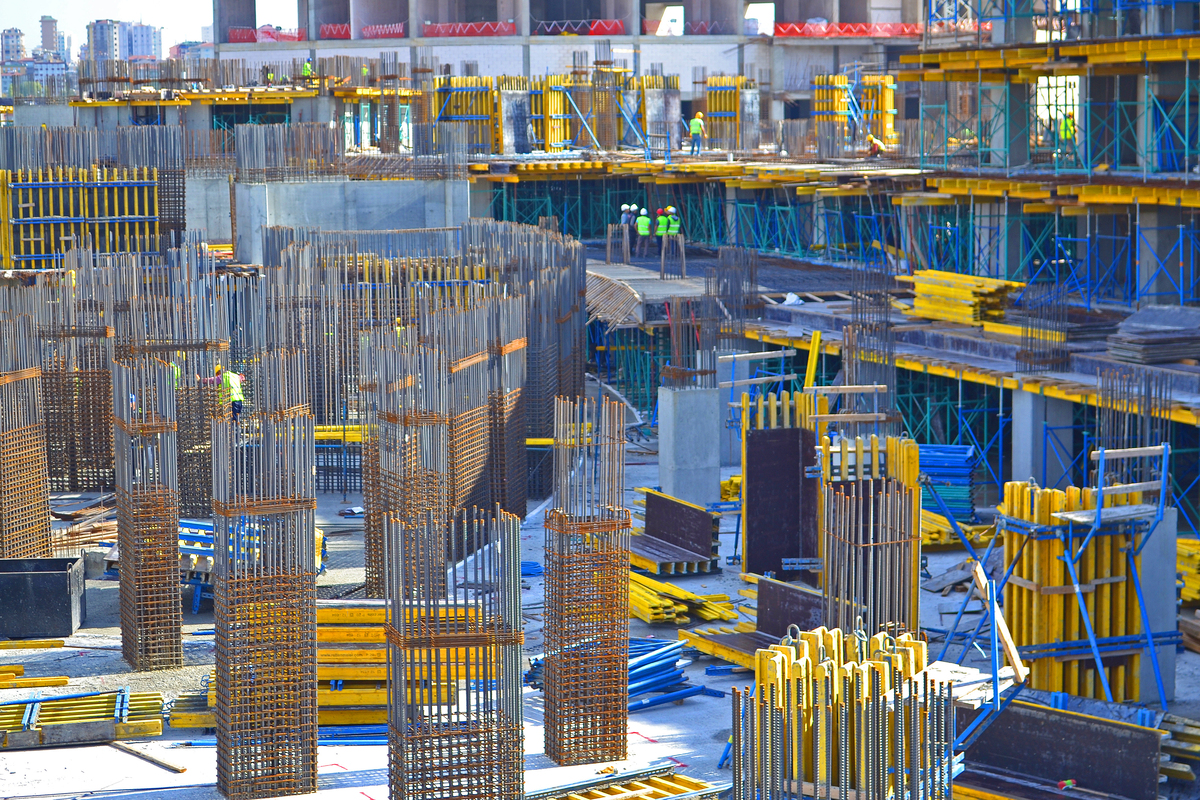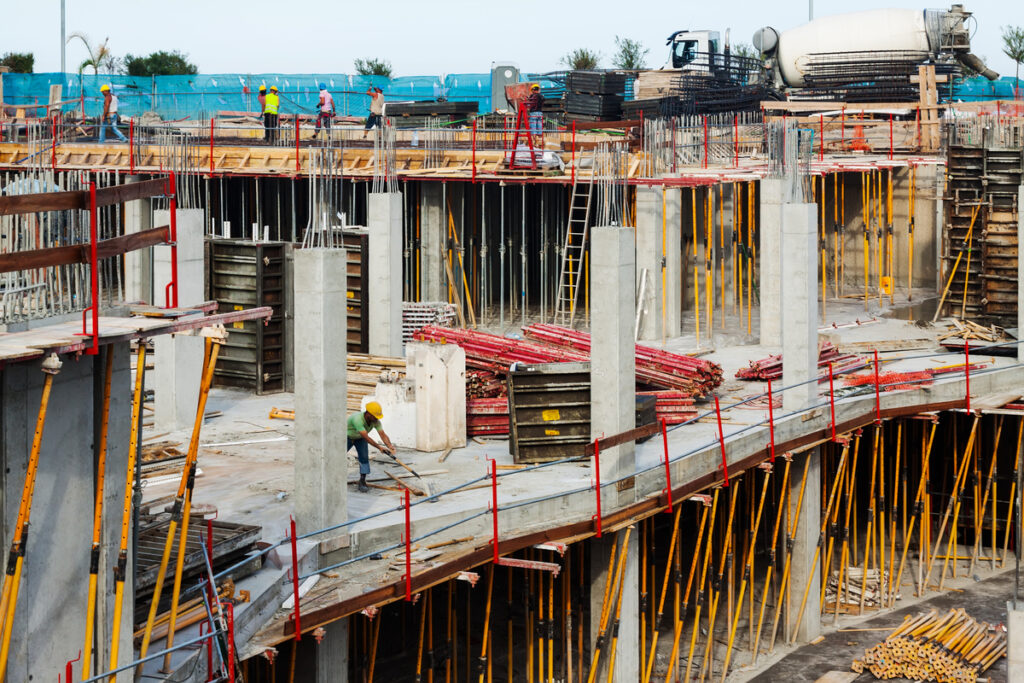Theft in construction statistics represents a pervasive threat, compromising the integrity of projects and imposing substantial financial burdens on companies worldwide. According to recent statistics, construction equipment theft alone accounts for annual losses ranging from $300 million to $1 billion in the United States. Beyond equipment, materials like copper, steel, and lumber are targeted, further exacerbating the industry’s vulnerability to theft in construction statistics. These figures underscore the pressing need for comprehensive theft prevention strategies within the construction sector.
Factors such as economic fluctuations, inadequate security measures, and organized crime involvement contribute to the prevalence of theft in construction statistics. Urban areas, with their higher population densities, often witness elevated rates of theft, while rural construction sites face challenges due to limited security infrastructure and remote locations. Moreover, internal factors like insider threats and lax record-keeping practices compound the risk.
In light of these challenges, it is imperative for construction companies to prioritize theft prevention efforts. By implementing robust security protocols, leveraging advanced technologies, and fostering collaboration with law enforcement agencies, construction firms can mitigate the impact of theft, protect their assets, and ensure the successful completion of projects. This article explores the current state of theft in construction statistics, factors contributing to its prevalence, and best practices for effective theft prevention.
Table of Contents
Current State of Theft in Construction
The current state of theft in construction statistics is a significant concern, with various factors contributing to its prevalence. Recent statistics indicate that theft continues to pose a substantial threat to construction projects, leading to significant financial losses and operational disruptions.
One of the primary areas of concern is the theft of equipment and machinery from construction sites. Construction equipment, ranging from heavy machinery to power tools, is highly valuable and often left unattended on job sites, making it a prime target for thieves. According to industry reports, equipment theft accounts for a significant portion of overall losses in the construction sector.
Additionally, construction materials are also vulnerable to theft in construction statistics, including items such as lumber, copper piping, and wiring. The rising costs of raw materials have made them attractive targets for thieves looking to profit from the resale of stolen goods. Furthermore, the increase in construction activity in many regions has led to a surge in demand for materials, exacerbating the problem of theft.
Suggested article to read: Construction Monitoring Solutions: Your Complete Guide
Geographically, certain areas are more susceptible to construction theft than others, with urban environments often experiencing higher rates of incidents due to higher population densities and greater opportunities for theft. However, rural construction sites are not immune, as they may lack adequate security measures and surveillance.
Organized crime involvement is another significant factor contributing to theft in the construction industry. Organized theft in construction statistics rings often targets construction sites, stealing valuable equipment and materials for resale on the black market. These criminal networks operate sophisticated operations, utilizing tactics such as falsifying documentation and utilizing insider information to identify lucrative targets.
Internal factors within construction companies can also contribute to theft incidents. Inadequate security measures, such as a lack of proper fencing, lighting, and surveillance cameras, can make construction sites easy targets for thieves. Additionally, insufficient employee vetting and supervision may lead to theft perpetrated by employees or subcontractors.
The impact of theft in construction statistics is profound, extending beyond financial losses to include delays in project timelines, increased insurance premiums, and damage to the reputation of construction firms. Theft-related disruptions can result in costly project delays, leading to missed deadlines and contractual penalties.
Theft remains a significant challenge for the construction industry, with a range of factors contributing to its prevalence. Addressing this issue requires a multifaceted approach, including the implementation of robust security measures, investment in theft prevention technologies, and collaboration between industry stakeholders and law enforcement agencies. By prioritizing theft prevention efforts, construction companies can mitigate risks and safeguard their projects and resources.

Factors Contributing to Theft
Several factors contribute to theft in construction statistics, ranging from economic influences to organizational vulnerabilities. Understanding these factors is crucial for implementing effective theft prevention measures. Here are some of the key contributors:
- Economic Conditions: Economic factors play a significant role in driving theft in the construction industry. Economic downturns, high unemployment rates, and fluctuations in material prices can increase the incentive for theft in construction statistics. During economic downturns, individuals may resort to theft as a means of survival or to capitalize on the high demand for construction materials.
- High-Value Assets: Construction sites are filled with high-value assets such as heavy machinery, power tools, and construction materials. These assets are often left unattended, making them easy targets for thieves. The high resale value of stolen equipment and materials further incentivizes theft.
- Lack of Security Measures: Inadequate security measures at construction sites create opportunities for theft. Poorly secured sites, lack of perimeter fencing, inadequate lighting, and limited surveillance contribute to the vulnerability of construction assets. Thieves are more likely to target sites with lax security measures as they present lower risks of detection and apprehension.
- Insider Threats: Theft in construction statistics is not always perpetrated by external actors; insider threats are also a significant concern. Employees, subcontractors, and other personnel with access to construction sites may exploit their positions to steal equipment or materials. Insider theft can be challenging to detect and prevent, particularly if proper vetting and supervision protocols are not in place.
- Organized Crime Involvement: Organized crime groups often target the construction industry due to the lucrative nature of construction assets. These groups may operate sophisticated theft rings that specialize in stealing and fencing construction equipment and materials. Organized crime involvement can exacerbate theft rates and pose significant challenges for law enforcement agencies.
- Remote Locations: Construction sites located in remote or rural areas are particularly vulnerable to theft. Limited access to law enforcement and surveillance resources in these areas makes it easier for thieves to operate without detection. Furthermore, remote sites may lack basic infrastructure, such as reliable internet connectivity, hindering the implementation of theft in construction prevention technologies.
- Inadequate Record-Keeping: Poor record-keeping practices can facilitate theft by making it easier for thieves to conceal stolen assets. Without proper documentation and inventory management systems in place, construction companies may struggle to identify missing equipment or materials until it’s too late. Effective record-keeping is essential for detecting theft and initiating timely responses.
Addressing theft in construction requires a comprehensive approach that addresses both external and internal factors. By implementing robust security measures, conducting thorough employee vetting, and fostering a culture of accountability, construction companies can mitigate the risks associated with theft and safeguard their assets. Collaboration with law enforcement agencies and industry stakeholders is also crucial for combating organized crime involvement and reducing theft rates.
Theft in Construction Statistics
Theft in the construction industry remains a significant challenge globally, although specific statistics may vary by region and over time. Here are some general statistics and trends related to theft in construction:
- Equipment Theft: Construction equipment theft in construction accounts for a considerable portion of overall theft incidents in the industry. According to the National Equipment Register (NER), an estimated $300 million to $1 billion worth of construction equipment is stolen annually in the United States alone.
- Materials Theft: Construction materials, including copper, steel, lumber, and piping, are also frequent targets for theft in construction. The value of stolen materials can add up quickly, with losses ranging from thousands to millions of dollars per incident.
- Geographic Variations: Theft rates vary by geographic region, with urban areas often experiencing higher rates of theft due to higher population densities and greater opportunities for theft. However, rural construction sites are also vulnerable, particularly due to limited security measures and remote locations.
- Organized Crime Involvement: Organized crime groups sometimes target the construction industry due to the lucrative nature of construction assets. These groups may operate sophisticated theft rings, stealing high-value equipment and materials for resale on the black market.
- Impact on Small Businesses: Small construction businesses are particularly vulnerable to theft, as they may lack the resources to implement robust security measures or recover from significant losses. Equipment theft, in particular, can have devastating financial consequences for small contractors and subcontractors.
- Underreporting: It’s important to note that theft in construction is often underreported. Some incidents may go unreported due to concerns about insurance premiums, reputational damage, or the perception that law enforcement may not prioritize theft investigations.
- Seasonal Patterns: Theft in construction may also exhibit seasonal patterns, with an increase in incidents during peak construction seasons when more sites are active and there is greater demand for equipment and materials.
- Technological Solutions: Increasingly, construction companies are turning to technology-based solutions such as GPS tracking systems, surveillance cameras, and asset tagging to mitigate theft risks and improve asset recovery capabilities.
- Collaboration with Law Enforcement: Collaboration between construction companies and law enforcement agencies is crucial for addressing theft effectively. Reporting theft incidents promptly and sharing information with law enforcement can help identify patterns, apprehend perpetrators, and recover stolen assets.
Given the dynamic nature of the construction industry and evolving security threats, it’s essential for construction companies to stay vigilant, implement robust security measures, and adapt to changing circumstances to minimize the risk of theft and protect their assets and projects.
Suggested article to read: 5 Workers Monitoring Solutions in Construction Industry
Impact of Theft on Construction Projects
The impact of theft in construction can be profound, affecting various aspects of project execution, costs, and timelines. Here are some key impacts of theft on construction projects:
- Financial Losses: Theft results in direct financial losses for construction companies due to the theft of expensive equipment, tools, and materials. The cost of replacing stolen items can be substantial, especially for specialized equipment or high-value materials like copper wiring. Additionally, insurance premiums may increase following theft incidents, further adding to financial burdens.
- Project Delays: Theft in construction can cause significant delays in construction projects, disrupting planned schedules and timelines. When essential equipment or materials are stolen, work on affected areas may come to a halt until replacements can be sourced and delivered. Delays in obtaining replacements can cascade throughout the project, impacting subsequent tasks and milestones.
- Increased Costs: In addition to the direct costs of replacing stolen items, theft in construction can lead to indirect costs that drive up project expenses. For example, increased security measures, such as hiring security personnel or installing surveillance systems, require additional investment. Furthermore, delays caused by theft may result in contractual penalties, overtime payments, or extended project durations, all of which contribute to higher costs.
- Reputational Damage: Theft in construction incidents can tarnish the reputation of construction companies, affecting their credibility and ability to secure future projects. Clients may lose confidence in contractors who fail to adequately protect their assets, leading to strained relationships and potential loss of business opportunities. Reputational damage can have long-term implications for a company’s success and profitability.
- Safety Risks: Theft in construction can pose safety risks to workers and the public, particularly if stolen equipment or materials are essential for ensuring site safety. For example, theft of safety equipment like scaffolding or barricades can compromise worker safety and increase the likelihood of accidents or injuries. Construction sites left vulnerable to theft may also attract trespassers or unauthorized personnel, further exacerbating safety concerns.
- Project Quality: Theft-related disruptions can compromise the quality of construction projects, leading to potential defects or deficiencies. For instance, if stolen materials are substituted with inferior alternatives or if construction work is rushed to make up for lost time, the overall quality of the finished project may suffer. Poor quality workmanship can result in costly rework or repairs down the line, impacting project longevity and client satisfaction.
- Legal and Regulatory Consequences: Construction companies may face legal and regulatory consequences as a result of theft incidents. Depending on the circumstances, companies may be held liable for negligence or breaches of contract if they fail to implement adequate security measures or fulfill contractual obligations related to asset protection. Legal disputes arising from theft incidents can lead to costly litigation and damage to company reputation.
Overall, the impact of theft on construction projects extends beyond immediate financial losses to encompass delays, increased costs, reputational damage, safety risks, and potential legal consequences. To mitigate these impacts, construction companies must prioritize theft prevention measures and implement robust security protocols to safeguard their assets and ensure project success.

Emerging Trends and Technologies in Theft Prevention
Emerging trends and technologies in theft prevention are offering innovative solutions to combat the growing challenges faced by the construction industry. These advancements aim to enhance security measures, improve asset tracking, and deter potential thieves. Here are some of the key trends and technologies in theft prevention for construction sites:
- GPS Tracking Systems: GPS tracking systems are becoming increasingly popular for tracking the location of construction equipment and vehicles in real-time. These systems use satellite technology to monitor the movement of assets, allowing construction companies to detect unauthorized usage or theft promptly. Advanced GPS tracking solutions can also provide geofencing capabilities, sending alerts when equipment leaves predefined boundaries.
- Surveillance Cameras and Drones: Surveillance cameras and drones are essential tools for monitoring construction sites and deterring theft. High-resolution cameras equipped with night vision and motion detection capabilities can capture footage of suspicious activities, providing valuable evidence for law enforcement investigations. Drones offer aerial surveillance capabilities, allowing for comprehensive coverage of large construction sites and remote areas.
- RFID and Barcode Technology: Radio-frequency identification (RFID) and barcode technology are used for tracking and managing inventory of construction materials and equipment. RFID tags and barcode labels can be attached to assets, enabling automated identification and inventory management. These technologies facilitate accurate asset tracking, inventory reconciliation, and theft prevention through enhanced visibility and control.
- Biometric Authentication: Biometric authentication systems, such as fingerprint or facial recognition technology, are increasingly being deployed to restrict access to sensitive areas within construction sites. By requiring biometric verification for entry, construction companies can prevent unauthorized access by intruders or unauthorized personnel. Biometric authentication adds an additional layer of security beyond traditional key-based access control systems.
- Smart Security Systems: Smart security systems integrate various sensors, alarms, and access control devices to create comprehensive security solutions for construction sites. These systems can detect unauthorized entry, motion, or tampering and trigger immediate alerts to security personnel or designated authorities. Smart security systems may also incorporate remote monitoring and management capabilities, allowing for proactive response to security threats.
- Blockchain Technology: Blockchain technology is being explored for its potential applications in securing supply chains and verifying the authenticity of construction materials. By leveraging blockchain-based platforms, construction companies can create immutable records of material transactions, ensuring transparency and traceability throughout the supply chain. Blockchain-enabled solutions can help mitigate the risk of counterfeit materials and unauthorized substitutions, thereby enhancing theft prevention efforts.
- Data Analytics and Predictive Modeling: Data analytics and predictive modeling techniques are being used to analyze historical theft patterns and identify potential vulnerabilities within construction sites. By analyzing data from past theft incidents, construction companies can gain insights into common theft hotspots, modus operandi of thieves, and risk factors contributing to theft. This information enables proactive decision-making and the implementation of targeted theft prevention measures.
Overall, emerging trends and technologies in theft prevention are empowering construction companies to enhance security measures, mitigate risks, and protect valuable assets from theft. By leveraging these advancements, construction firms can improve operational efficiency, minimize financial losses, and ensure the successful execution of construction projects.
Suggested article to read: TokenMe: Monitoring Solution in Construction Industry
Best Practices for Theft Prevention
Implementing effective theft prevention measures is crucial for safeguarding construction projects and assets. Here are some best practices for theft prevention in the construction industry:
- Comprehensive Security Protocols: Develop and implement comprehensive security protocols tailored to the specific needs and risks of each construction site. These protocols should include measures such as perimeter fencing, access control systems, surveillance cameras, lighting, and signage to deter potential thieves and unauthorized personnel.
- Employee Training and Awareness: Provide regular training and awareness programs for employees to educate them about the importance of theft prevention and security protocols. Ensure that employees are trained to recognize suspicious activities, report security breaches promptly, and adhere to company policies for asset protection.
- Secure Storage and Locking Mechanisms: Store valuable equipment, tools, and materials in secure storage facilities equipped with robust locking mechanisms. Implement inventory management systems to track the movement and usage of assets and ensure that only authorized personnel have access to key storage areas.
- Regular Inventory Audits: Conduct regular inventory audits to verify the presence and condition of equipment and materials on construction sites. Compare inventory records against physical counts to detect discrepancies or signs of theft in construction promptly. Implement stringent controls for documenting the transfer, use, and disposal of assets to prevent unauthorized removal or misappropriation.
- Collaboration with Law Enforcement: Foster collaboration with local law enforcement agencies to enhance theft prevention efforts and facilitate swift response to theft incidents. Establish communication channels for reporting thefts, sharing intelligence, and coordinating joint operations to apprehend perpetrators and recover stolen assets. Work closely with law enforcement to prosecute offenders and deter future thefts effectively.
- Use of Theft Deterrents: Deploy theft deterrents such as visible signage, alarm systems, security patrols, and security seals to deter potential thieves and intruders. Implement measures such as GPS tracking devices, immobilizers, and anti-theft tags on high-value assets to enhance traceability and recovery capabilities in the event of theft in construction.
- Background Checks and Vetting: Conduct thorough background checks and vetting processes for employees, subcontractors, vendors, and visitors with access to construction sites. Verify credentials, employment history, references, and criminal backgrounds to mitigate the risk of insider threats and unauthorized access by individuals with malicious intent.
- Community Engagement and Neighborhood Watch: Engage with local communities and establish neighborhood watch programs to enlist the support of residents in monitoring construction sites and reporting suspicious activities. Foster positive relationships with neighbors, businesses, and community leaders to enhance overall security and promote a sense of collective responsibility for crime prevention.
- Regular Security Assessments: Perform regular security assessments and risk evaluations to identify vulnerabilities, assess the effectiveness of existing security measures, and implement necessary improvements. Engage security experts or consultants to conduct site surveys, threat assessments, and security audits to identify weaknesses and recommend mitigation strategies.
- Continuous Improvement and Adaptation: Maintain a proactive approach to theft prevention by continuously monitoring and adapting security measures in response to changing threats and circumstances. Stay informed about emerging trends, technologies, and best practices in theft prevention and leverage new advancements to strengthen security protocols and stay ahead of potential risks.
By adopting these best practices and integrating theft prevention into overall risk management strategies, construction companies can mitigate the risks associated with theft and protect their assets, projects, and reputations effectively.
Conclusion
In conclusion, theft in construction continues to pose a significant threat to the construction industry, with equipment, materials, and assets being targeted by thieves for financial gain. The statistics reveal alarming figures, with equipment theft alone accounting for millions of dollars in losses annually. Factors such as economic conditions, inadequate security measures, organized crime involvement, and insider threats contribute to the prevalence of theft in construction.
The impact of theft in construction extends beyond financial losses, affecting project timelines, costs, safety, and overall quality. Delays caused by theft can result in contractual penalties, increased insurance premiums, and reputational damage to construction firms. Moreover, theft-related disruptions compromise safety standards and project outcomes, leading to potential legal and regulatory consequences.
To address these challenges, construction companies must adopt a multifaceted approach to theft prevention, incorporating robust security protocols, employee training, collaboration with law enforcement, and the deployment of advanced technologies. By implementing best practices for theft prevention and continuously improving security measures, construction firms can mitigate risks, protect their assets, and ensure the successful execution of construction projects in a safer and more secure environment.
Suggested article for reading:
Understanding GDPR in Worker Monitoring (2024)
Cybersecurity in Construction; Guide to 2024
Resources:
Tool Sense | Trimble View Point | gocodes.com | Mobile Video Guard | Eye Sight Surveillance
For all the pictures: Freepik




